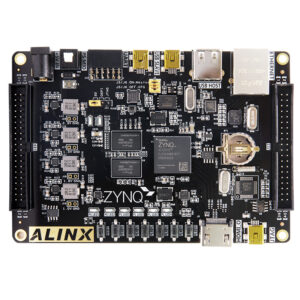At times when we are working with an electronic circuit, we tend to get a fluctuating load or thermal heat than required from input or from some intermediary components in the circuit. We need to stabilize the output flow for proper functioning as deviations may reduce the efficiency of the circuit. When working on Microcontrollers, a constant 5V in necessary. Otherwise it might damage the circuit as a whole.
Brief Introduction to a Voltage Regulator
A Voltage Regulator generates a fixed output voltage that remains constant regardless of changes to its input voltage or load conditions. Voltage Regulator reduces the incoming voltage to the desired output level and dumps the excess energy as heat. There are a variety of specific types of Voltage Regulators based on the particular method they use to control the voltage in a circuit.
This is the basic L317T Voltage Regulator as shown in figure 1. It is a three-terminal positive regulator (One for input, one for output and the middle one as ground). The IC is capable of delivering up to 1A of output current. Input voltage can be up to 40V andoutput voltage can be adjusted from 1.2V to 37V.

Basic Operation
A basic Voltage Regulator relies on a simple electromechanical design. A wire connected to the circuit is coiled so that it forms an electromagnet. As the voltage in the circuit increases, so does the strength of the electromagnet. This causes an iron core to move towards the electromagnet which is connected to a power switch. When the moving magnet pulls the switch, it reduces the voltage in the circuit. In general, a voltage regulator functions by comparing its output voltage to a fixed reference and minimizing this difference with a negative feedback loop.
Difference between an Adaptor and a Voltage Regulator
Even an Adaptor does the same function as that of a Voltage Regulator but the stability at 5V is more accurate in Voltage Regulators than Adaptors which may deviate. They both remove spikes, they both try to maintain constant voltage but it is assumed that an Adaptor is not as precise as a Regulator. Both are used on AC power. When it comes to using the word ‘Regulator’, in DC, Regulator can mean +/- 1% with the 78 or LM series.
An example on Voltage Regulator
In figure 2, we can see a circuit that blinks a lamp from a 12V battery. Initially, the battery does not supply. The circuit contains a LM317T Voltage Regulator that allows up to 9V and an NPN transistor and Variable resistor to control the supply.

In figure3, we can see that once the supply is given from battery, the lamp blinks with 5.7V as displayed in the DC voltmeter when the Variable resistor is increased to some extent.

Now we can see in figure 4, the LM317T Voltage Regulator supplies up to 9V from a maximum of 12V from the battery. The Variable resistor is kept at maximum to supply full voltage of 12V but the total voltage coming is just 9V because the Voltage Regulator controls it and allows a regulated output of 9V consistently.

Some of the important features are:
They have a Thermal shut down control, Safe area protection, and current limiter. Sometimes the current limiter of the regulator can also benefit other components in the circuit as it can provide protection for the circuit also.
For more information about the product please visit: http://www.tenettech.com/category/390/regulator
For technical queries please drop an e-mail: info@tenettech.com






